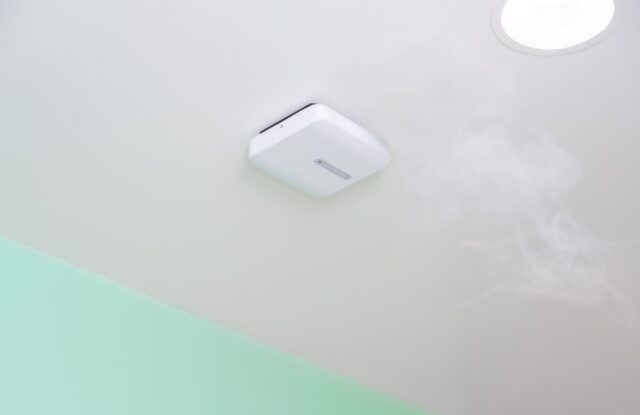
In the contemporary landscape of education, a new epidemic—vaping, has become a prevalent concern, especially within school environments. Schools have become at the forefront of the vaping epidemic, as students, intrigued by flavored e-liquids and discreet vaporizers, partake in this harmful activity.
The rising concerns and health risks associated with this activity among the student population have led to exploring innovative solutions like vape detectors, to combat this burgeoning issue.
This piece will explore the potential of vape detectors in creating a smoke-free school environment and delve into their efficacy, benefits, and the associated challenges.
Understanding the Vaping Epidemic
The trend of vaping in schools has witnessed a startling increase, with various studies showing that a substantial portion of middle and high school students have tried vaping. The attraction to these products often lies in their easy accessibility and the allure of diverse flavors, presenting a seemingly “cool” alternative to traditional cigarettes.
Unfortunately, the repercussions of vaping extend beyond ephemeral pleasure, impacting students’ health and academic performance adversely. The combination of nicotine and harmful chemicals in e-cigarettes can lead to addiction, respiratory issues, and developmental problems, emphasizing the urgency to address this crisis promptly.
The Role of Vape Detectors

Vape detectors are innovative devices designed to detect vaping-related aerosols and emissions within a confined space. These detectors work by identifying changes in air quality, signaling the presence of vape smoke. The market offers various types, each with unique features aimed at accommodating different needs and preferences.
The primary function of a vape detector is not only to identify vaping instances but also to act as preventive measures, discouraging students from indulging in this activity due to the fear of being caught, thus ensuring a healthy and conducive learning environment.
Benefits of Vape Detectors in Schools
The implementation of vape detectors in schools has multiple benefits. It serves as a significant deterrent, making students think twice before considering vaping on school premises. Early detection can prevent the development of a habit, providing intervention opportunities before a potential addiction sets in.
Schools can proactively address the vaping concern, thereby reducing the likelihood of students facing the severe health repercussions associated with it. Moreover, the presence of vape detectors can contribute to fostering a responsible attitude among students, highlighting the importance of adhering to rules and making health-conscious decisions.
Challenges and Concerns

While vape detectors hold promise, challenges and concerns pertaining to privacy, false alarms, and implementation costs are inherent. Privacy concerns arise as students may feel constantly monitored, potentially leading to an environment of mistrust. False alarms can be disruptive and might contribute to a skewed perception of the prevalence of this activity.
The initial cost of installation and maintenance can be a barrier for many educational institutions, especially those with limited resources. Addressing these challenges necessitates a balanced and considerate approach, ensuring that the benefits outweigh the potential downsides.
Alternatives and Support Systems
Combatting school vaping is not solely reliant on technology; alternative strategies like educational programs and counseling play a crucial role. These programs aim to educate students about the ramifications of vaping, encouraging informed decision-making.
Parental involvement and community support significantly enhance the effectiveness of these initiatives, creating a unified front against the vaping epidemic. Several resources and organizations are available to aid schools in their anti-vaping endeavors, offering guidance, support, and tools to cultivate a healthy, informed, and responsible student body.







